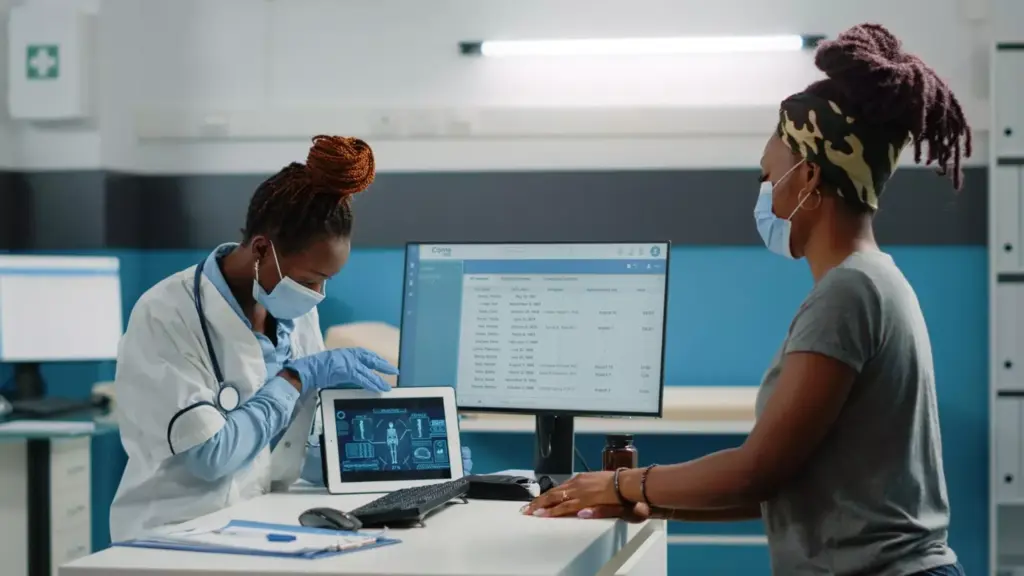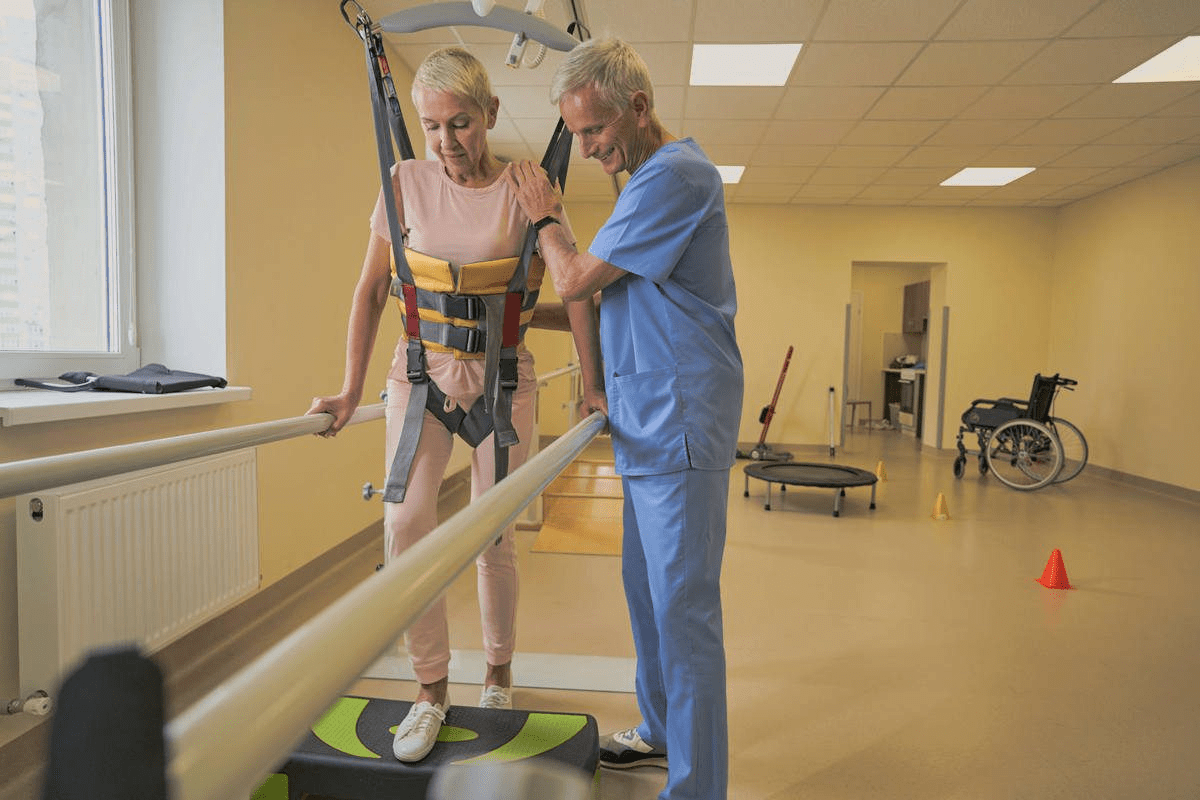Last Updated on November 27, 2025 by Bilal Hasdemir

Substance use disorders affect millions worldwide, causing significant health and social issues. We recognize the complexity of addiction classification and its impact on individuals and families.
Globally, over 48 million people suffer from substance use disorders. This results in 2.6 million deaths from alcohol and over 8 million from tobacco each year. Understanding the various addiction categories is key for effective treatment.
At Liv Hospital, we are dedicated to providing patient-centered care. We offer internationally competitive treatments for different addiction types. Our approach uses the latest research and a supportive environment to help individuals overcome their struggles.
Key Takeaways
- Substance use disorders affect over 48 million people worldwide.
- Understanding different addiction categories is key for effective treatment.
- Liv Hospital provides patient-centered care and internationally competitive treatments.
- Our approach focuses on the latest research and a supportive environment.
- Effective treatment methods vary based on the type of addiction.
The Science of Addiction and Its Global Impact
Addiction is a complex issue, involving biology, psychology, and environment. It’s not just a choice but a chronic condition that changes the brain and behavior.
Understanding addiction is key to finding effective treatments. By studying how it affects the brain, we can help those struggling with substance use disorders.
How Addiction Affects the Brain
Addiction changes the brain’s reward system, stress response, and decision-making. The brain’s chemistry changes with repeated substance use. This leads to long-term adaptations and addictive behaviors.
Key changes in the brain include:
- Dopamine dysregulation: Altered reward processing and motivation.
- Stress system activation: Heightened response to stress, contributing to relapse.
- Impaired decision-making: Compromised ability to make rational choices.
Global Statistics on Substance Use Disorders
Substance use disorders are a big problem worldwide, affecting public health. Millions of people globally struggle with these disorders. This shows the need for more treatment options.
| Region | Prevalence of Substance Use Disorders | Treatment Gap |
|---|---|---|
| North America | 5.4% | 80% |
| Europe | 4.6% | 75% |
| Global Average | 3.4% | >90% |
The Economic and Social Costs of Addiction
Addiction has big economic and social costs. It affects individuals, communities, and societies. The costs include healthcare, lost productivity, and crime related to substance use.
The social costs are also huge, with addiction causing family problems, social isolation, and mental health issues. Understanding these costs shows why we need to invest in prevention and treatment.
By tackling addiction with a broad approach, we can lessen its impact worldwide. This will improve the lives of those affected.
Alcohol Addiction: America’s Most Prevalent Substance Abuse Problem
Alcohol addiction is a big problem in America. It affects many people and their families. We need good treatment plans to help.
Signs and Symptoms of Alcohol Use Disorder
Spotting alcohol use disorder is key. Look for signs like needing more alcohol to feel the same effect. Also, watch for withdrawal symptoms when they stop drinking.
They might spend a lot of time getting or using alcohol. Or, they might spend a lot of time recovering from it. Ignoring work or school because of alcohol is another sign.
They might keep drinking even when it hurts their health. Or, they might do risky things while drunk. Finding these signs early is important.
Evidence-Based Treatment Approaches for Alcoholism
Good treatment for alcoholism is based on science. Medicines like naltrexone help reduce cravings. Behavioral therapies like CBT and MI help people understand their addiction.
Support groups like AA are also important. They offer a place to share experiences and get support. A good treatment plan includes medical, psychological, and social support.
Recovery Rates and Long-term Outcomes
Recovering from alcohol addiction takes time and support. Studies show that the right treatment can help a lot. Things like mental health issues, family support, and commitment to recovery matter.
People who keep going to support groups do better in the long run. With the right care and support, recovery is possible. This improves life for those struggling with alcohol addiction.
Nicotine and Tobacco Addiction: Understanding the Dependency
Nicotine and tobacco addiction are complex issues. They involve both physical and mental factors. Nicotine, the main active substance in tobacco, is very addictive. It changes the brain’s chemistry, leading to long-term effects.
Physiological and Psychological Aspects
Nicotine addiction makes the body dependent on nicotine and the mind crave tobacco despite health risks. The body releases dopamine and other neurotransmitters, causing pleasure and reward.
Psychologically, addiction is influenced by stress, emotions, and surroundings. Knowing these factors helps in creating effective treatments.
Modern Cessation Methods and Medications
Many methods and medications help fight nicotine and tobacco addiction. These include:
- Nicotine replacement therapy (NRT) in forms such as gum, lozenges, patches, and inhalers.
- Prescription medications like bupropion and varenicline that reduce cravings and withdrawal symptoms.
- Counseling and behavioral therapies that address the psychological aspects of addiction.
These methods can be used alone or together to boost their effectiveness.
Success Rates and Relapse Prevention
Quitting nicotine and tobacco success rates vary. They depend on the method used and the individual’s level of addiction. Studies show that combining medications with counseling can greatly improve success rates.
Preventing relapse is key to long-term recovery. Strategies include avoiding triggers, keeping a support network, and continuing therapy.
Understanding nicotine and tobacco addiction and using effective methods can help individuals overcome their dependency. This improves their overall health.
Opioid Crisis: From Prescription Painkillers to Heroin
We are facing a severe opioid crisis that has moved from prescription painkillers to heroin. This crisis has hit communities hard across the United States. It has left a path of addiction and tragedy.
The Evolution of America’s Opioid Epidemic
The opioid crisis started with more use of prescription painkillers in the late 1990s and early 2000s. Companies told doctors these drugs weren’t addictive. But, as time went on, it was clear they were very addictive. Many people became dependent on them.
When prescription opioids became harder to get, people turned to heroin. It was cheaper and easier to find. This change made heroin use more common.
Medication-Assisted Treatment Options
Medication-assisted treatment (MAT) is a key treatment for opioid addiction. It uses drugs like methadone, buprenorphine, or naltrexone with counseling. Studies show it can greatly reduce opioid use and help people stay in treatment.
Using medication-assisted treatment with support services works well. It helps manage withdrawal and cravings. It also tackles the reasons behind addiction.
Heroin Recovery Rates and Challenges
Recovering from heroin addiction is tough, with many relapsing. But, the right treatment can help many stay sober. Heroin recovery rates depend on the treatment and support.
Overcoming heroin addiction is hard because of ongoing support needs and relapse risks. Mental health issues also add to the challenge. Yet, new treatments and therapies offer hope for recovery.
To tackle the opioid crisis, we must support proven treatments and reduce addiction stigma. This way, we can help more people recover and start anew.
Cannabis and Stimulant Addictions
Substance addiction comes in many forms, with cannabis and stimulant addictions being key areas of study. It’s vital to grasp the details of each to offer the right care.
Cannabis Use Disorder: Debunking Myths
Cannabis use disorder is often seen as harmless. But, research shows it can be addictive, more so for those who start young or use it often. About 9% of adults who use cannabis will become dependent, the National Institute on Drug Abuse reports.
It’s important to clear up myths about cannabis use disorder to create better treatments. Some think it’s not addictive because it doesn’t cause withdrawal like other drugs. Yet, withdrawal symptoms can happen, like irritability, mood and sleep issues, and cravings.
| Myth | Reality |
|---|---|
| Cannabis is not addictive. | Approximately 9% of adults who use cannabis will become dependent. |
| Cannabis doesn’t cause withdrawal symptoms. | Withdrawal symptoms can include irritability, mood and sleep difficulties, and cravings. |
Cocaine Addiction: Mechanisms and Treatment
Cocaine addiction is complex, marked by a strong urge to use drugs despite harm. It changes brain chemistry, affecting the dopamine system. Cocaine’s effects on the brain can lead to lasting changes that fuel addiction.
Treatment for cocaine addiction combines behavioral therapies and sometimes medication. Cognitive-behavioral therapy (CBT) is common, helping people change negative thoughts and behaviors linked to drug use.
Methamphetamine Dependency: Treatment Challenges
Methamphetamine dependency is tough to treat because of its impact on the brain and severe withdrawal symptoms. Treatment needs a full approach, including therapy, support groups, and sometimes medication for withdrawal and cravings.
“Methamphetamine addiction is a serious condition that requires a multifaceted treatment plan. By understanding the challenges associated with methamphetamine dependency, healthcare providers can develop more effective treatment strategies.”
Exploring cannabis and stimulant addictions shows we need a deep understanding of each to help effectively. By clearing up myths and grasping the challenges and treatments, we can support recovery better.
The Complete Spectrum of Reco Addiction Types
Addiction is not just about opioids and alcohol. It also includes inhalants, sedatives, and hallucinogens. Each type of addiction has its own challenges and needs a specific treatment plan.
Inhalants and Sedatives: Hidden Dangers
Inhalants and sedatives are often ignored, but they are very dangerous. Inhalants, like solvents and gases, can make you drunk fast. They are easy to misuse because they are everywhere. Sedatives, given for anxiety or sleep, can be addictive if not used right.
These substances are easy to find and many think they are safe. But, using them wrong can harm your health a lot. It can even cause brain damage or overdose.
Hallucinogens: Patterns of Abuse and Recovery
Hallucinogens change how you see and feel things. They don’t make you physically dependent like some other drugs. But, they can mess with your mind a lot.
Getting better from hallucinogen use is all about fixing the mental issues. You might need therapy to find out why you used them. You also learn how to handle your feelings and thoughts during recovery.
Prescription Drug Misuse: America’s Silent Epidemic
Using prescription drugs in ways not meant by the doctor is a big problem. It’s called a “silent epidemic.” It includes taking someone else’s medicine or using it for something else.
This addiction is sneaky because it often starts with a real medical reason. But, it can quickly turn into misuse, like with opioids and benzodiazepines. We need to teach about the dangers, prescribe wisely, and offer help for those who are addicted.
Behavioral Addictions: Beyond Chemical Dependencies
We’re looking into addiction types, focusing now on behavioral addictions. These impact lives just like substance use disorders do. They involve compulsive actions, despite knowing they’re harmful. This can ruin many areas of life, like relationships and work.
Gambling, Internet, and Gaming Disorders
Gambling, internet, and gaming disorders are common behavioral addictions. Gambling disorder leads to a lot of distress or harm. Internet addiction means using the internet too much, hurting other life areas. Gaming disorder makes gaming more important than everything else.
These disorders share common causes. They affect the brain’s reward system, like substance use disorders. This leads to compulsive behavior.
Treatment Approaches for Process Addictions
Treating these addictions needs a detailed plan. Cognitive-behavioral therapy (CBT) helps change negative thoughts and behaviors. Other methods include motivational interviewing, family therapy, and support groups.
New tech-based treatments are also being used. This includes online therapy, mobile apps, and digital support groups.
Every person’s battle with addiction is different. So, treatment plans are made to fit each person’s needs. By using many treatment methods, we can help those seeking recovery from behavioral addictions.
Modern Drug Treatment Methods and Innovation
The world of addiction treatment is changing fast. New methods are giving people hope for recovery. These changes come from advances in medical research and technology.
Integrated Treatment Approaches
More people are using integrated treatment methods. These methods combine medical, psychological, and social help. This way, patients get all-around care, boosting their recovery chances.
For example, a treatment plan might include medicine, therapy, and support groups. This approach tackles addiction’s many sides. It helps individuals on their recovery path.
Studies show integrated treatment works well. It cuts down on relapse and improves well-being. Mountainside, a leader in kratom treatment, sees more people wanting this kind of care.
The Role of Technology in Addiction Recovery
Technology is key in helping people recover from addiction. It offers new ways to support those in recovery. Mobile apps and telemedicine services are just a few examples.
These tools help track progress and offer support anytime. They also let us reach more people, even in remote areas. Online groups and forums help people feel connected, fighting isolation.
Personalized Medicine in Addiction Treatment
Personalized medicine is changing addiction treatment. It tailors care to each person’s needs. By looking at genetics, environment, and psychology, we create plans that fit.
This method makes treatment more effective and safer. For example, genetic tests help pick the right medicines. New research on the brain and biomarkers is also helping.
Conclusion: Embracing Recovery as a Journey
Recovery from drug addiction is not just a goal; it’s a long journey. We’ve looked at different types of addiction and how to treat them. Healing from addiction needs a mix of medical help and ongoing support.
Effective drug rehab goes beyond the first treatment. It requires a long-term dedication to staying sober. Relapse rates show that recovery is a slow process that needs patience and care. We urge those fighting addiction to get help, knowing that recovery is achievable with the right support.
We recognize the challenges of addiction and the need for ongoing recovery efforts. Our goal is to create a supportive environment for healing and growth. We aim to offer top-notch healthcare and support for those seeking to overcome addiction.
FAQ
What are the most common types of addiction?
Common addictions include alcohol, nicotine, and opioids. Also, cannabis, cocaine, and methamphetamine are common. Behavioral addictions like gambling and internet use disorder are also prevalent. Knowing these types is key to effective treatment.
How does addiction affect the brain?
Addiction changes the brain’s reward system and decision-making. It also affects stress response. These changes make recovery hard.
What are the global statistics on substance use disorders?
Millions worldwide struggle with substance use disorders. This issue costs a lot in terms of health and economy. It’s a big public health problem globally.
What is the economic cost of addiction?
Addiction costs a lot, including healthcare and lost productivity. The total cost is in trillions of dollars each year worldwide.
How effective are modern drug treatment methods?
Modern treatments, like medication-assisted therapy, are very effective. They help people recover from addiction. Technology also supports recovery.
What is the role of personalized medicine in addiction treatment?
Personalized medicine tailors treatment to each person. It considers genetics and environment. This approach can make treatment more effective.
Can behavioral addictions be treated?
Yes, behavioral addictions like gambling and internet use can be treated. Therapies like cognitive-behavioral therapy and support groups help.
What are the signs and symptoms of alcohol use disorder?
Signs include drinking too much and not being able to stop. Despite negative effects, some continue to use. Early detection is key for help.
How can nicotine addiction be overcome?
Overcoming nicotine addiction needs a plan. This includes quitting methods, medications, and strategies to prevent relapse. Support and counseling help a lot.
What is medication-assisted treatment for opioid addiction?
This treatment uses medications like methadone. It’s combined with counseling to manage cravings and withdrawal. It helps manage addiction.
Are there effective treatments for stimulant addictions?
Yes, treatments for stimulant addictions exist. They include behavioral therapies and sometimes medication. Treatment is tailored to the individual and substance.
Why is relapse considered part of the recovery process?
Relapse is a common part of recovery. It shows the need for ongoing support and possibly adjusting treatment plans.
How can technology aid in addiction recovery?
Technology helps through tools like mobile apps and online support groups. It makes recovery support more accessible.
References
- National Institute on Drug Abuse (NIDA). (2025). IC Fact Sheet 2025. Retrieved from https://www.nida.nih.gov/about-nida/legislative-activities/budget-information/fiscal-year-2025-budget-information-congressional-justification-national-institute-drug-abuse/ic-fact-sheet-2025
- Drug Abuse Statistics. (n.d.). Retrieved from https://drugabusestatistics.org
- United Nations Office on Drugs and Crime (UNODC). (2025). World Drug Report 2025: Key Findings. Retrieved from https://www.unodc.org/documents/data-and-analysis/WDR_2025/WDR25_B1_Key_findings.pdf








